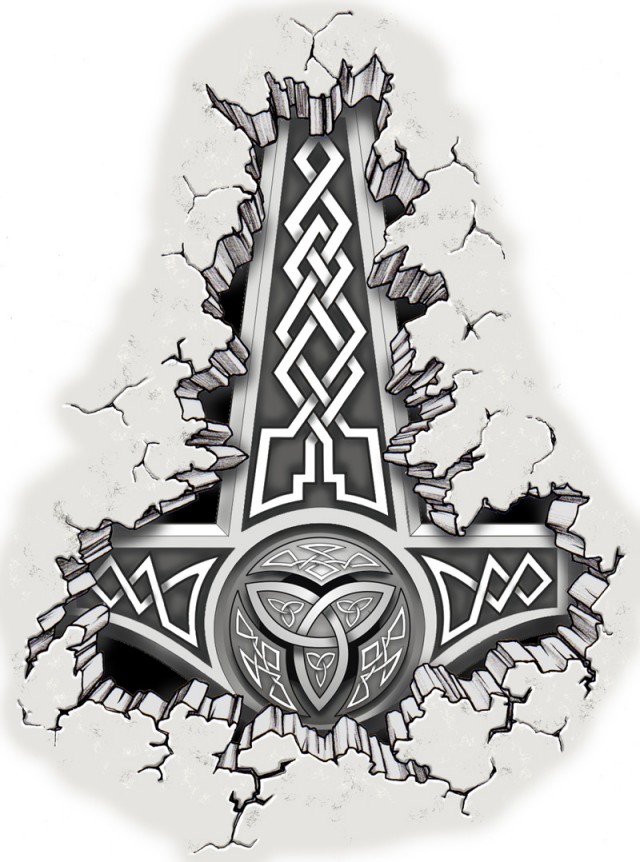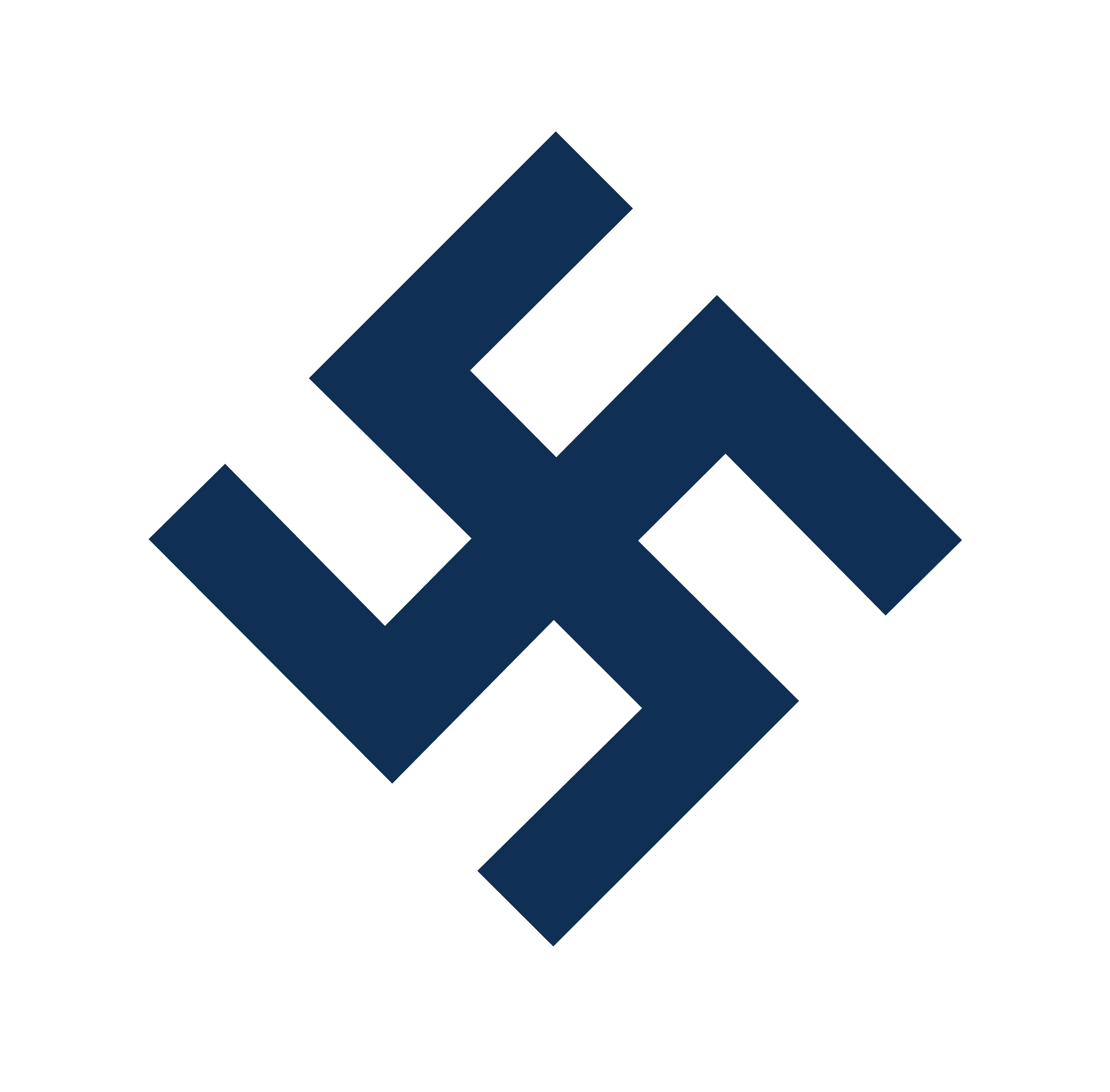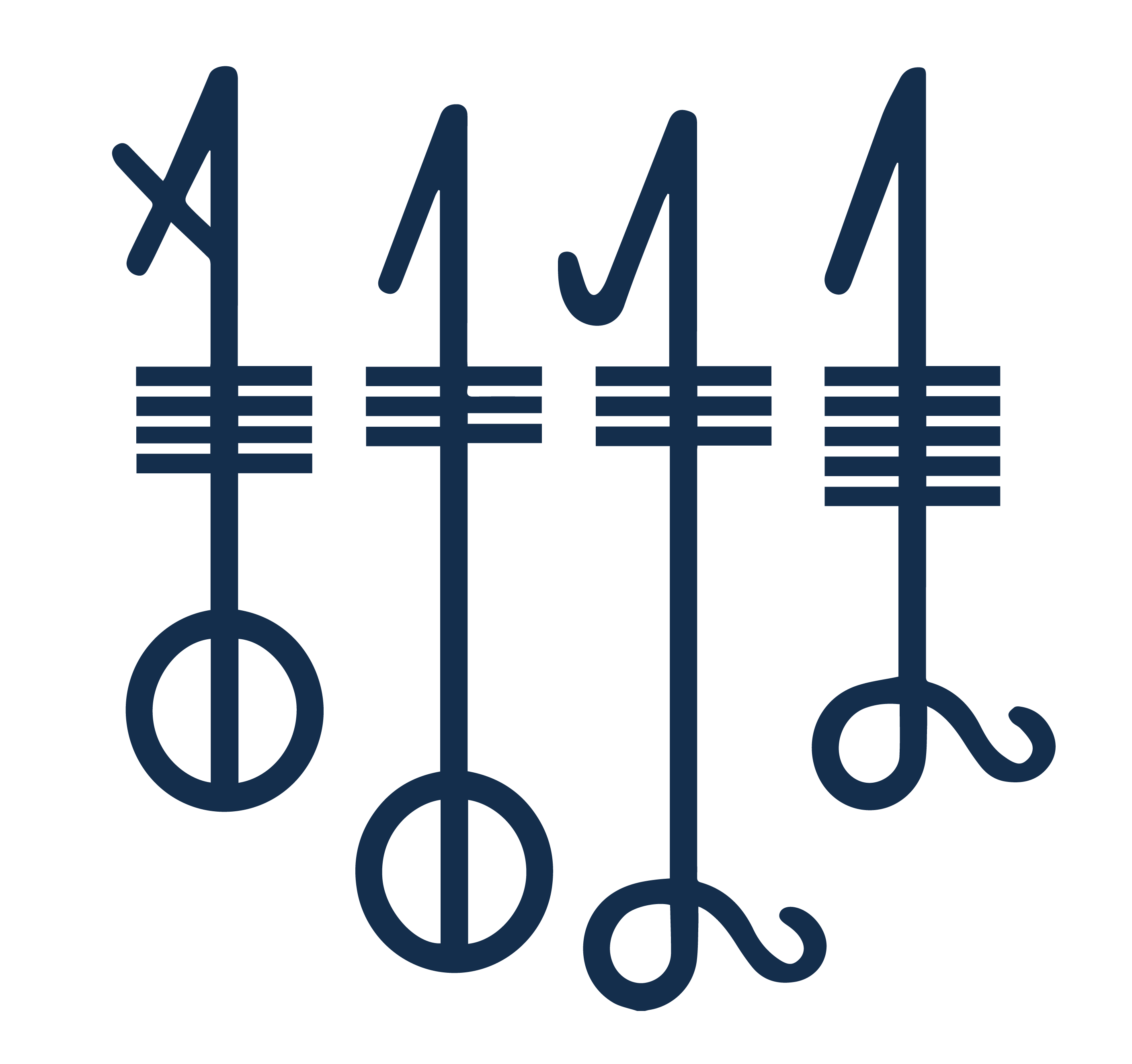Symbols played an important role in the Viking culture. From merely representing their faith, to calling on their gods for protection or instilling fear in their enemies, the Norse people used various symbols for different purposes. But how well do we know these symbols? For those of you who are curious to learn about them, here are the most important Viking symbols/Norse symbols:
Table of Contents
Valknut
Without a doubt, the Valknut is one of the most prominent and popular Viking symbols. Also known as Odin’s knot, Hrungnir’s heart, the knot of the slain warrior and the Heart of Vala, the Valknut is considered as the symbol of Odin.
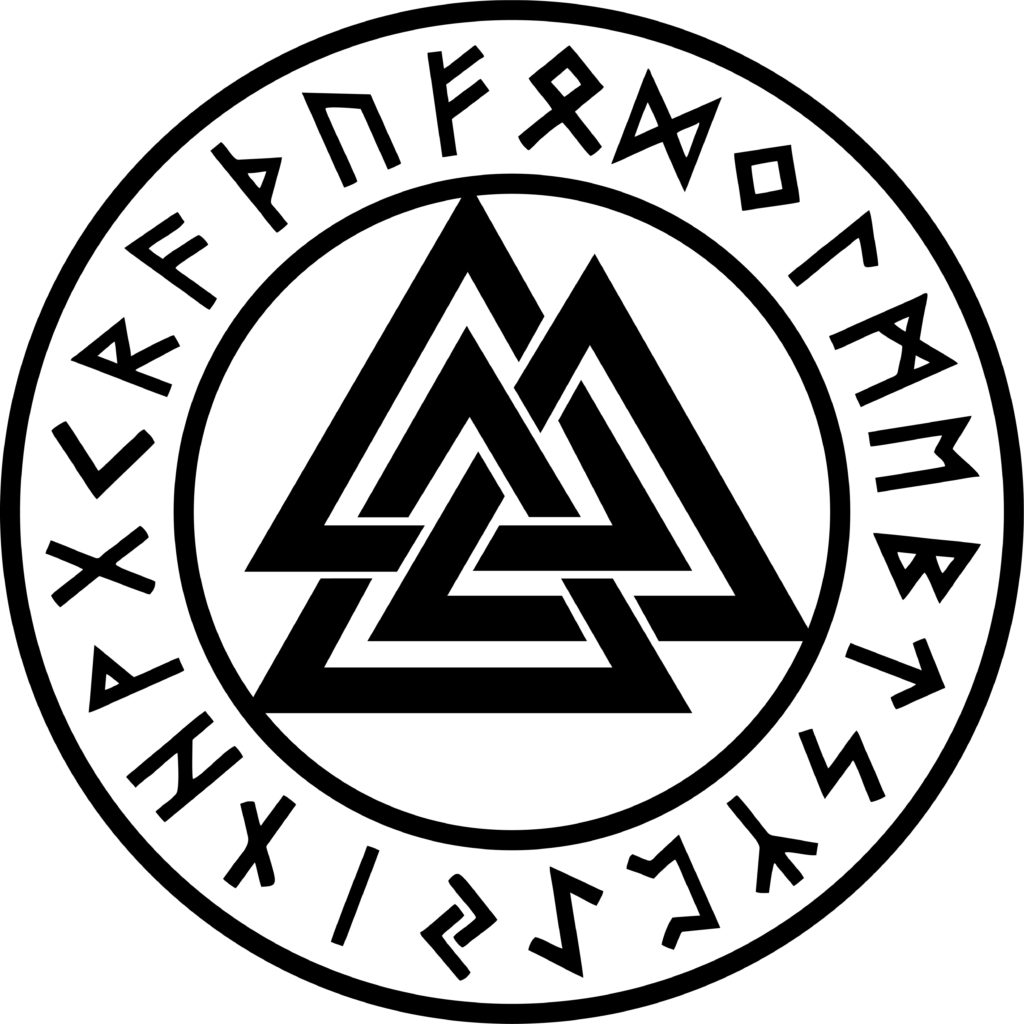
The word ‘valknut’ is derived from two different words: ‘valr’ meaning slain warrior and ‘knut’ meaning knot.
According to Norse faith, in Valhalla (the Hall of the Slain), Odin, the god of death and war in Norse mythology, would welcome the warriors slain/killed in battle.
In addition to that, Odin figures as well as figures and drawings of animals closely associated with him were discovered in many Viking tombs with the Valknut drawn or placed right next to them. These are the two main reasons why the Valknut is considered the symbol of Odin.
The nine corners of three triangles comprising the Valknut is also associated with the nine worlds in Norse mythology and the cycle of life through motherhood and pregnancy. Read more about the Valknut in our detailed post by clicking below:
[irp posts=”3083″ name=”Valknut, The Symbol of Odin and Its Meaning in Norse Mythology”]
Yggdrasil
Yggdrasil, the Tree of Life, is not only one of the most prominent Viking symbols/Norse symbols but an important element of the Norse faith itself.
According to Norse mythology, Yggdrasil is the Great Tree that connects the nine worlds/nine realms of the universe, namely Asgard, Midgard, Muspelheim, Jotunheim, Vanaheim, Niflheim, Alfheim, Svartalfheim, Helheim.
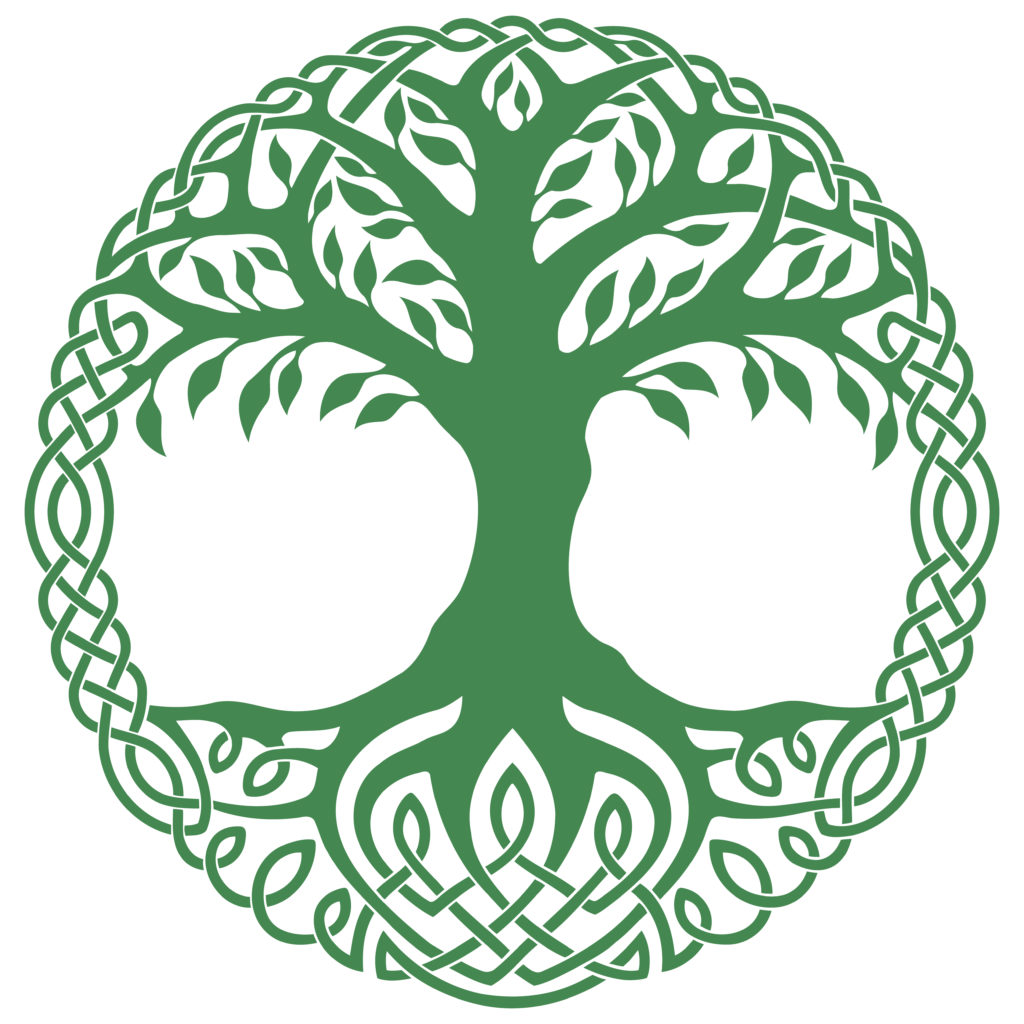
That is why Yggdrasil is considered the symbol of the interconnectedness of all things in the universe.
Yggdrasil stands in a spring according to the Norse faith which suggests all life comes from water. That is one of the reasons why it is called the Tree of Life.
The second reason is that it is believed for Yggdrasil’s fruits to provide youth for the gods, ‘giving them life’.
According to Norse mythology, the world will end with Ragnarok, a battle between gods with only a man and a woman surviving it by hiding inside the hollow of a tree. The couple will leave the tree to bring life back again to the world.
Although the tree in question is not mentioned specifically or Yggdrasil is not clearly associated with the myth, it is believed by some to be the tree that will protect life from Ragnarok.
Aegishjalmur/Aegishjalmr, The Helm of Awe and Terror – Viking Symbols
The next one in our extensive list of Viking symbols is Aegishjalmr. Aegishjalmr (also known as the Helm of Awe and terror) is a rune stave that is known as a Viking symbol of protection.
The word Aegishjalmur is comprised of two different words in Old Norse language: aegis meaning ‘shield’ and hjalmr meaning ‘helm’.
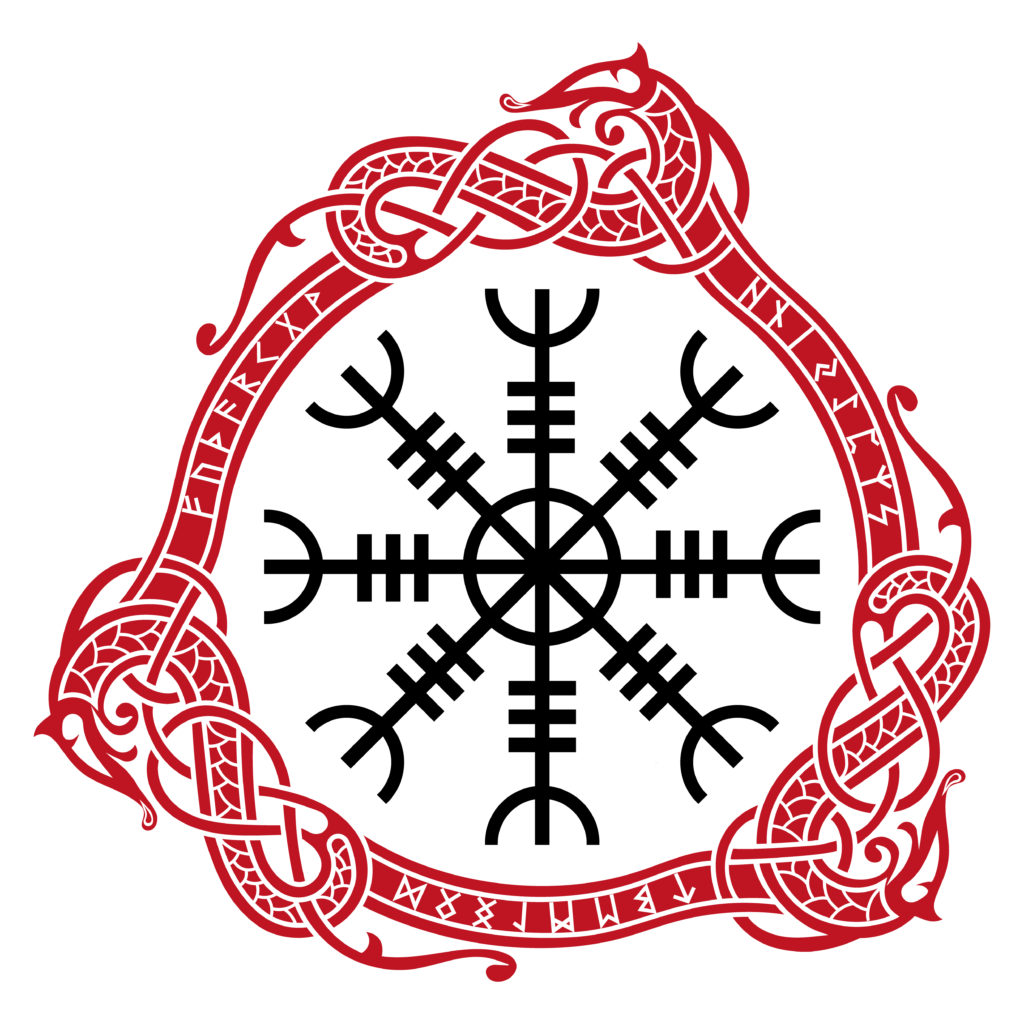
We should clarify something at this point: the ‘helm’ part of Aegishjalmr here, which actually is the root of the word ‘helmet’ in English, does not refer to anything physical or mean a physical helmet – like many others chose to believe later on. It simply means ‘at the forefront’.
In fact, Viking warriors used to draw Aegishjalmr on their foreheads to be protected from their enemies and to instill fear in them.
As one of several Norse protection symbols, Aegishjalmr is mentioned in several sagas regarding the deeds of the Viking heroes including the Völsunga Saga.
Today, the Aegishjalmur is drawn or used in form of tattoos as a protection symbol or a symbol of identification among Asatru believers.
If you would like to read more about it, check out our Aegishjalmr post below:
[irp posts=”2925″ name=”Aegishjalmr/Aegishjalmur, The Helm of Awe Symbol and Its Meaning”]
Vegvisir, The Viking Compass/The Runic Compass, The Viking Symbol of Guidance
Widely associated with Aegishjalmr or sometimes even confused with it on account of the similarity between the two, the Vegvisir is another Viking symbol comprised of rune staves.
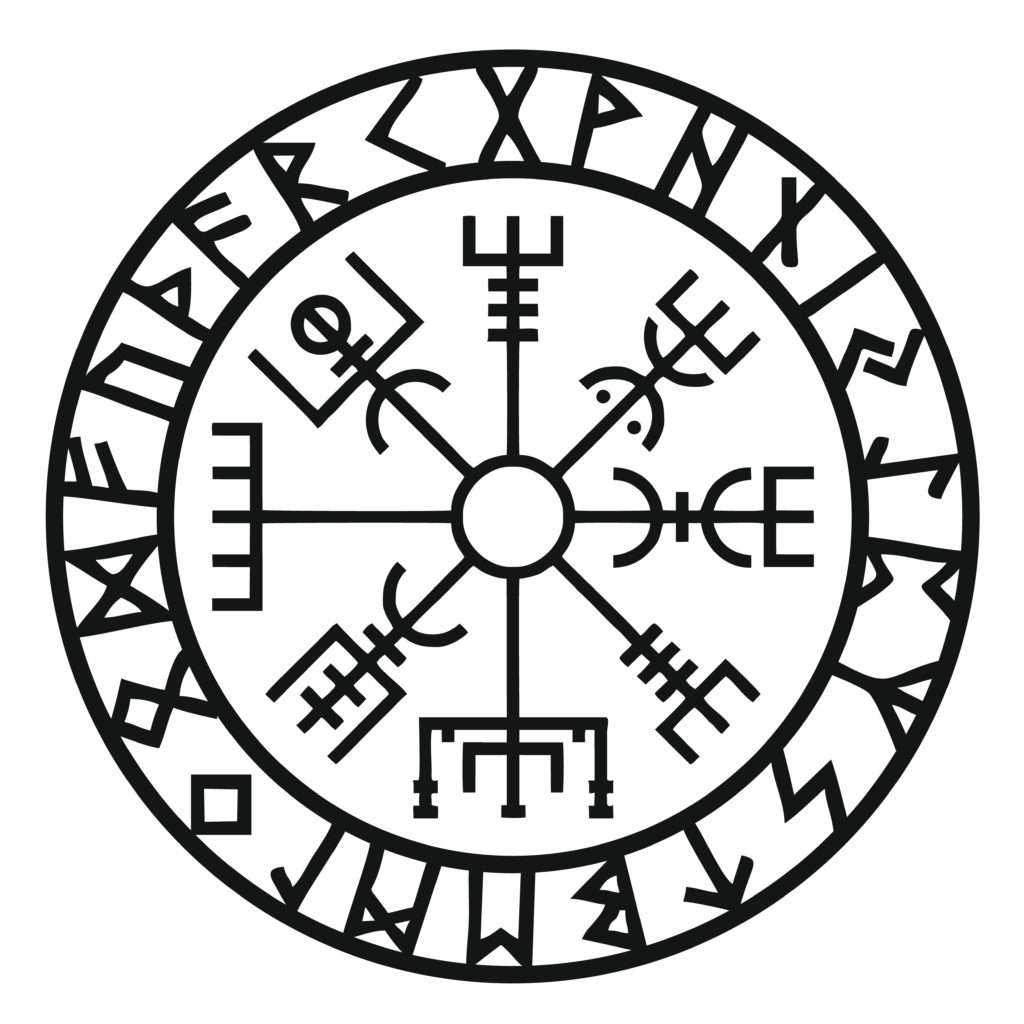
The Vegvisir, also known as the Viking compass/Nordic compass or the runic compass, is believed to provide guidance for a person who might lose/lost his way. It would also be drawn on Viking ships before they set sail to ensure they would come back home safely.
That said, there is a confusion about the origin of the symbol and whether or not it is a genuine symbol inherited from the Viking Age since there are very few resources mentioning it.
Check out our Vegvisir article below if you would like to learn more about it:
[irp posts=”3120″ name=”Vegvisir, The Symbol of Guidance and Protection & Its Meaning – The Viking Compass/Runic Compass”]
The Triple Horn of Odin – The Horn Triskelion
The Triple Horn of Odin is a Viking symbol made of three interlocking horns representing the three horns in the myth regarding Odin and his quest for the magical mead, Odhroerir/Óðrerir, also known as the Mead of Poetry.
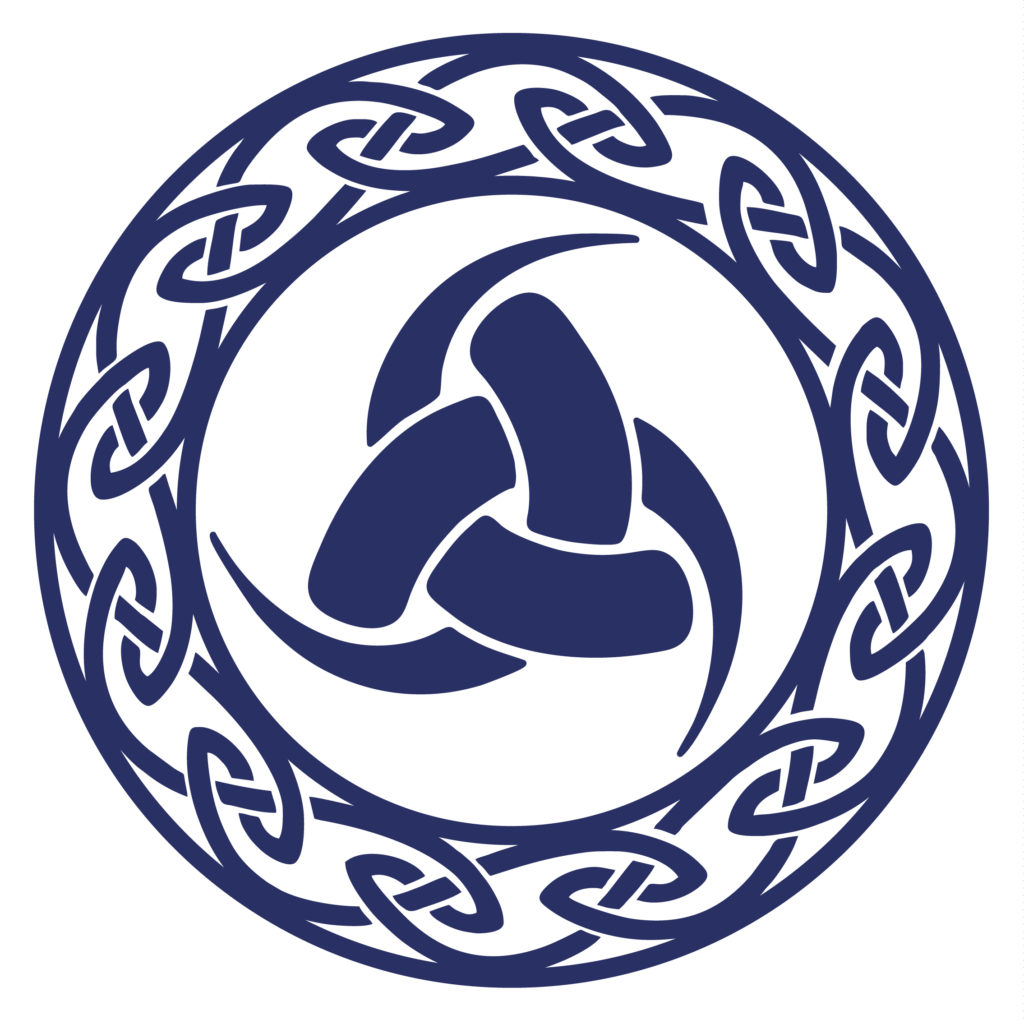
According to the belief, two dwarves named Fjalar and Galar killed Kvasir – a being (a god or a man according to different sources) created from the spit of Vanir and Æsir/Aesir (the two groups of gods in Norse mythology) who knew everything and could answer every question.
The dwarves mixed Kvasir’s blood with honey and poured it in three horns named Óðrœrir/Odhroerir, Boðn and Són.
Note: Odhroerir is the name associated with both the Mead of Poetry and one of the horns that contained it.
According to the myth, Odin used his wit to convince the giantess Gunnlöð and bargained with her to have a sip of the mead for three days.
Allowed only one sip per day, he used a whole horn for each time thus managing to drink all of the Mead of Poetry which helped him escape by turning into an eagle.
Today, apart from identifying oneself as Norse, the Triple Horn of Odin is used as a symbol of wisdom and inspiration, poetic inspiration in particular.
Mjölnir, The Hammer of Thor, The Viking Symbol of Strength And Protection
With its authenticity and significance in Norse mythology, Mjölnir, Thor’s Hammer is surely one of the most important Viking symbols/Norse symbols (if not the most important one).
There are several ideas regarding the etymology of the word Mjǫllnir in Old Norse language.
One suggests that Mjöllnir means ‘lightning’ while others suggest it might mean ‘white’ (as in the color of lightning) and/or ‘new snow’ (in a sense that it represents purity).
Another interpretation of the word suggests that the meaning is much closer to ‘crushing’ or ‘to crush’.
All of these suggestions are at least somewhat related to the symbolism behind the Hammer of Thor.
According to Norse mythology, Mjölnir was not just a weapon but a tool that was used by Thor for many purposes.
Thor consecrated things and people using his hammer and brought them from the realm of chaos into the sacred realm, that is, cosmos.
It was also believed that he used Mjölnir to bless marriages during which he provided the couple with fertility.
In the sense that Thor protected people against chaos by consecrating them with Mjölnir and he guarded the cosmos against the giants by crushing them with it, the Hammer of Thor is considered a Norse symbol of protection.
In fact, Viking warriors used to wear Thor’s Hammer as an amulet during battle to provide protection.
This tradition was carried on even after many Vikings converted to Christianity: Mjölnir amulets were worn by Christian Vikings along with crosses on their necks.
Today, in addition to being one of the most prominent Norse protection symbols, Mjölnir is used to represent the Germanic Neopaganism faith also known as Heathenry/Heathenism.
If you would like to know more about Mjölnir, click below to read our detailed article regarding Mjölnir which includes the story of its creation:
[irp posts=”3060″ name=”Mjolnir/Mjölnir, The Hammer of Thor: Meaning and Symbolism in Norse Mythology”]
The Swastika
Out of all Viking symbols, the Swastika is most definitely the one that almost lost its true meaning.
The symbol, which was used for consecration and blessing by Vikings and Indo-Europeans in a way that is very similar to Mjölnir, was appropriated by Hitler and the Nazi party and unfortunately is widely associated with that and only that since then.
If a person or a thing was hallowed by using the Swastika, that person/thing would become holy and lucky. In fact, the Swastika was believed to be the most significant good luck symbol/charm by some people.
It was believed to bring a person in a desperate, chaotic state to a one that is of strength, prosperity and order.
Svefnthorn
The next item on our list is Svefnthorn, one of the most authentic Viking symbols which was mentioned many times in several Norse sagas including The Saga of the Volsungs, The Saga of King Hrolf Kraki and Gongu-Hrolf’s Saga.
Although the appearance, definition and magical qualities of Svefnthorn is somewhat different in every myth, there is one thing in common in all stories: Svefnthorn was mainly used to put one’s enemies to sleep.
The symbol was used by Norse people (and gods) to put their adversaries into a deep and long sleep.
Odin puts Valkyrie Brynhildr/Brunhild into a deep sleep in The Saga of the Volsungs. She remains asleep until Sigurd heroically comes to her rescue and awakes her.
Queen Olof uses Svefnthorn to put King Helgi to sleep in The Saga of King Hrolf Kraki and he remained a sleep for hours.
Vilhjalmr uses it on Hrolf in Gongu-Hrolf’s Saga and Hrolf does not wake up until the next day.
Huginn and Muninn – The Twin Ravens of Odin As Viking Symbols
Huginn and Muninn are a pair of ravens that served Odin the Allfather as his messengers. In several artworks, the two ravens were depicted right next to Odin or sitting on his shoulders.
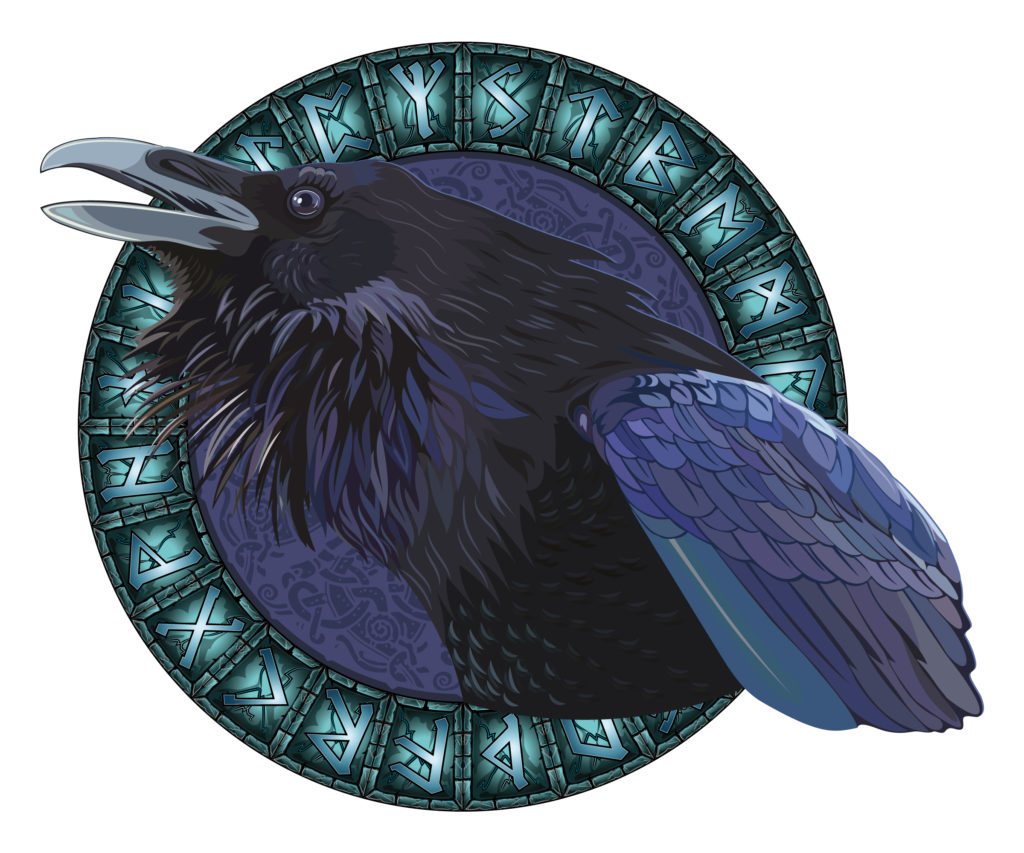
Huginn and Muninn flew around the world during the day and returned to Odin in the evening to tell him all they saw.
It was believed that, thanks to the abilities given to them by Odin, Huginn and Muninn were keen observers and could travel all of Midgard (the world) in a day, speak and understand the language of humans.
That is also the reason why some experts suggest that Huginn and Muninn might actually be projections of Odin’s consciousness.
The fact that the words ‘Huginn’ and ‘Muninn’ literally mean ‘thought’ and ‘mind’, respectively, strengthens this theory.
In that sense, Huginn and Muninn are considered as symbols of Odin and his powers.
What Did Ravens Mean To Vikings?
Ravens were revered in the Norse culture. Many Viking earls and kings, including Ragnar Lothbrok, used ravens on their banners.
Vikings also used ravens to find land when they set sail out to the unknown waters. They used to keep ravens in cages and let them out with regular intervals to find land.
Once let out, the ravens would scout the area around the ship and fly towards land if they found it. If not, they would fly right back to the ship.
That is, in fact how, one of the most famous Vikings, Floki (Hrafna-Flóki Vilgerðarson) found Iceland according to the story. The word ‘hrafna’ actually means ‘raven’.
The Web of Wyrd, The Matrix of Fate (Also Known as Skuld’s Net)
As one of the lesser-known Nordic symbols, the Web of Wyrd is a symbol in Norse mythology that represents the interconnectedness of past, present and future.
According to the myth, the Web of Wyrd was woven by the Norns/Nornir, the Shapers of Destiny in Norse mythology.
The symbol comprised of nine staves contains all the runes thus symbolizing all ‘the possibilities’ the past, present and future brought and might bring.
It is also called ‘Skuld’s net’ as Skuld was believed to be one of the Norns that wove the web.
Gungnir, The Magical Spear of Odin
Next in our list of ancient Nordic symbols is a weapon, a magical one, Gungning the magical spear of Odin the All-father. Gungnir is the name given to the magical spear of Odin forged by the dwarves, the most talented blacksmiths in the cosmos.
According to the myth, Odin started the war between the two groups of gods in Norse mythology, Aesir and Vanir, by hurling Gungnir over his enemies.
This gesture was later repeated by Viking warriors before battle in hopes of getting Odin’s protection and aid during the fight.
Gungnir never missed its target and according to some stories, it came back to Odin just like Mjölnir coming back to Thor every time it is thrown by the God of Thunder.
In the sense of representing him as the God of War, Gungnir is considered as a symbol of Odin.
The Troll Cross – Viking Symbols
The last item in our list of Viking symbols is a much less popular one, one that many people probably did not know existed; the Troll Cross. The Troll Cross is a Norse symbol of protection thought to be a part of Swedish folklore mostly.
The symbol is in the shape of an Odal/Othala rune in the Elder Futhark. It is believed to provide protection against evil elves, trolls and dark magic.
F.A.Q. About Viking Symbols
What are Odin’s symbols?
There are several symbols representing Odin. The first of those is Valknut, also known as ‘the Knot of the Slain Warriors’.
The triple horn of Odin is another one.
Odin had two ravens named Huginn and Muninn helping him see and hear what happens in Midgard, therefore, ravens are also considered a symbol of Odin.
Wolves, his eight-legged horse Sleipnir and his magical spear Gungnir are the other prominent symbols of Odin.
What is the Viking symbol for strength?
Mjölnir, the Hammer of Thor is the Viking symbol for strength. In addition to Mjölnir, the swastika, which was originially a Indo-European and Viking symbol until it was adopted by the Nazis, is also a symbol that is believed to bring mental and spiritual strength to a person in a bad shape.
What do the 3 Viking triangles mean?
The symbol comprised of 3 Viking triangles is called the Valknut and it is what is believed to be the main symbol of Odin. The Valknut’s origin is not exactly known, so there are several different interpretations about the meanings behind it. The threes were very important for the Norse people and the most important trinities that could be associated with the 3 triangles of Valknut are as follows:
- The three roots of Yggdrasil leading to three main realms (out of nine); Asgard, the home of the Gods, Jotunheim, the realm of Giants and Niflheim, the Underworld. Considering the 3 triangles has 3 vertices each and these triangles are depicted in an interlocking manner, these triangles might actually represent the Nine Realms and their interconnected nature.
- The three areas that existed before the creation of the realms of Gods and men; Niflheim, also known as the Land of the Mist, Muspelheim, also known as the land of the fire, and Ginnungagap, the void between these two areas.
- The three grandchildren of Buri, the first god that was ever created; Odin, Vili and Ve. These are the gods known to have given the mankind life, intelligence and the five senses, respectively.
- The three goddesses of destiny; Urd ( the Fate), Verdani (the Present) and Skuld (the Future).
Hope you liked our post about Viking symbols/Norse symbols. Share it if you could, many thanks!






